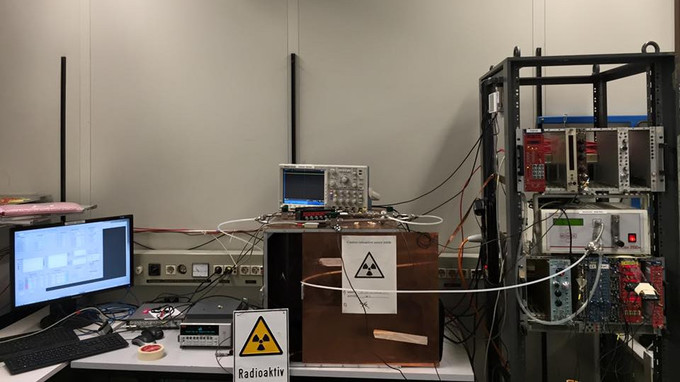Der Inhalt dieser Seite ist leider nur auf Englisch verfügbar.
International conference on particle detectors
Leading experts on gaseous ionizing particle detectors meet at TUM’s IAS
2018-06-18 – News from the Physics Department

The conference deals with detectors for particles whose kinetic energy is sufficiently high to ionize gas molecules or atoms. The resulting ions cause a current flow which can be measured. The oldest and arguably best known example of such a “gaseous ionizing particle detector” is the Geiger counter, invented more than 100 years ago.
Today, gaseous ionisation detectors form an important group of instruments used for radiation detection and measurement and are used in a range of different fields. These include particle and astro-particle physics as well as nuclear physics and their applications in biology and medicine. They are indispensable in radiation protection. Some gaseous ionization detectors – like dosimeters – are optimized for low levels of radiation to be observed over long periods of time, others can measure very fast and with a high spatial resolution.
Modern developments include so-called micro-pattern gas detectors (MPGD). These utilize advances in photolithography and other microprocessing techniques developed for semiconductor electronics to build particle detectors with high radiation resistance and excellent resolution in time and space.
The meeting covers recent and future developments in the field. One day will be fully dedicated to a topical workshop on protection of MPGDs against electrical discharges. This is particularly important for the safe operation of such detectors in harsh radiation environments, like at CERN’s large hadron collider (LHC).
About the RD51 collaboration
RD51 is the technical name of a worldwide collaboration established at CERN, the European research organization that operates the largest particle physics laboratory in the world in Geneva. The LHC, operated at CERN, is also the world’s largest and most powerful particle accelerator and collider.
The RD51 collaboration works on the development and application of advanced gaseous detector technologies and associated electronic readout systems. It serves as a global platform for the scientific community – for sharing know-how and results and working on common projects and infrastructure. The RD51 collaboration involves 90 universities and research laboratories from 25 countries in Europe, North and South America, Asia and Africa.
About the local organizers
The topics of Prof. Laura Fabbietti’s research group at TUM’s Physics Department include the development and application of gaseous particle detectors for basic research. The group is currently involved in the ALICE TPC upgrade project at CERN’s LHC. ALICE is one of the largest particle detectors in the world and the time projection chamber is at the heart of ALICE, recording the 3d paths of the ejected particles after a collision.
The Fabbietti group built all full-size prototypes for the detectors, ran a dedicated R&D program and are now actively involved in the production of readout chamber elements and the coordination of the project. In parallel to the ALICE activities, the group continues its research on improving the stability of micro-pattern gaseous detectors against electrical discharges and on optimization of their high-voltage systems.
More information
The organization of the meeting is supported by:
- RD51 Collaboration, CERN
- TUM Excellence Cluster ‘Universe’, Garching
- TUM Institute for Advanced Study, Garching
Local Organizing Committee
Prof. Dr. Laura Fabbietti (co-chair), Dr. Piotr Gasik (chair), Bernhard Hohlweger, Thomas Klemenz, Lukas Lautner, Andreas Mathis and Petra Zweckinger (secretary)
- RD51 Collaboration: Development of Micro-Pattern Gas Detectors Technologies
- Research group Fabbietti
- ALICE Experiment at the Large Hadron Collider
- Wikipedia article about the ALICE experiment
- Editing
- Dr. Johannes Wiedersich